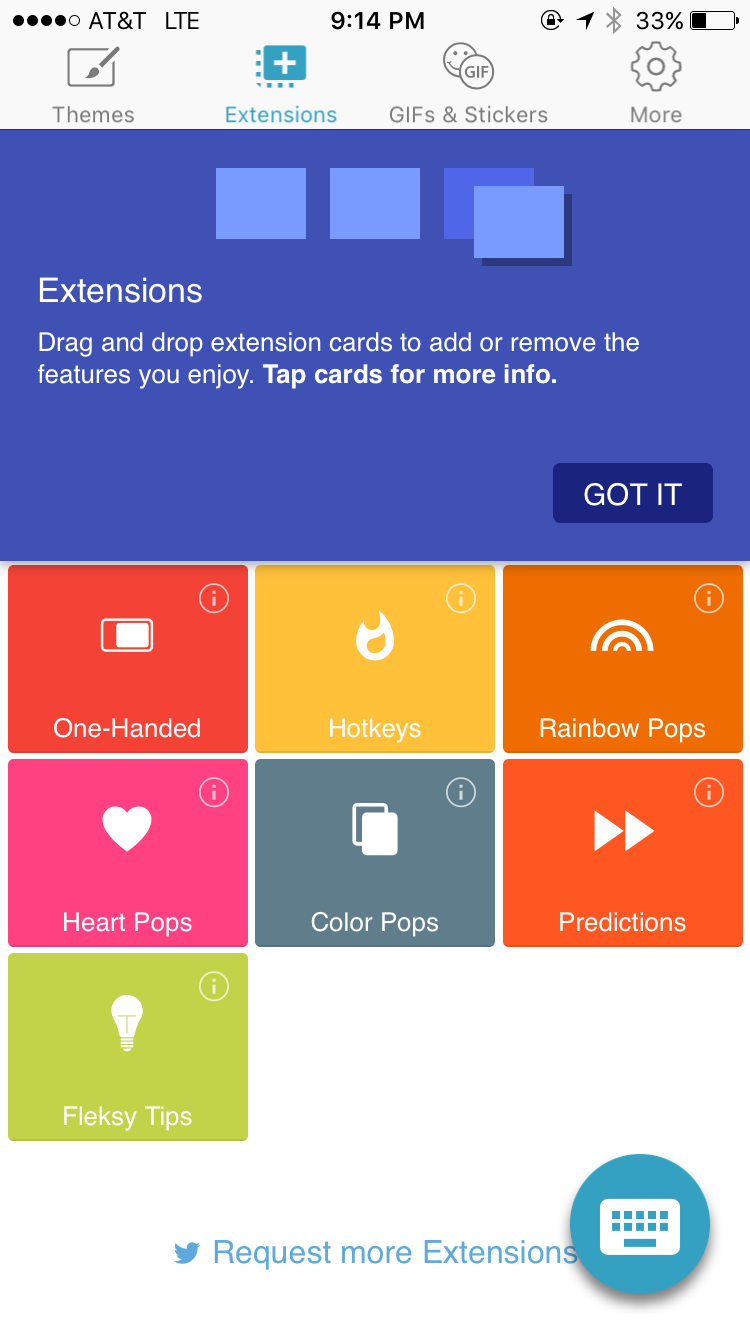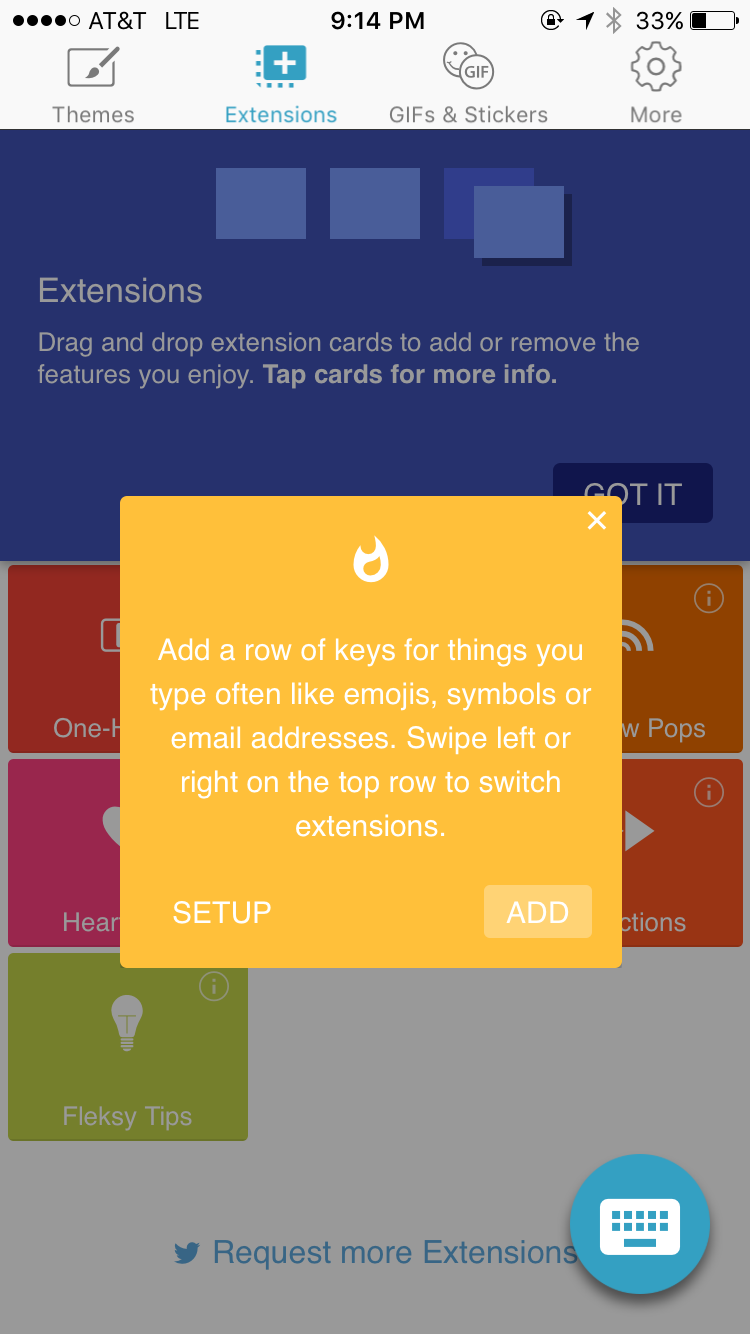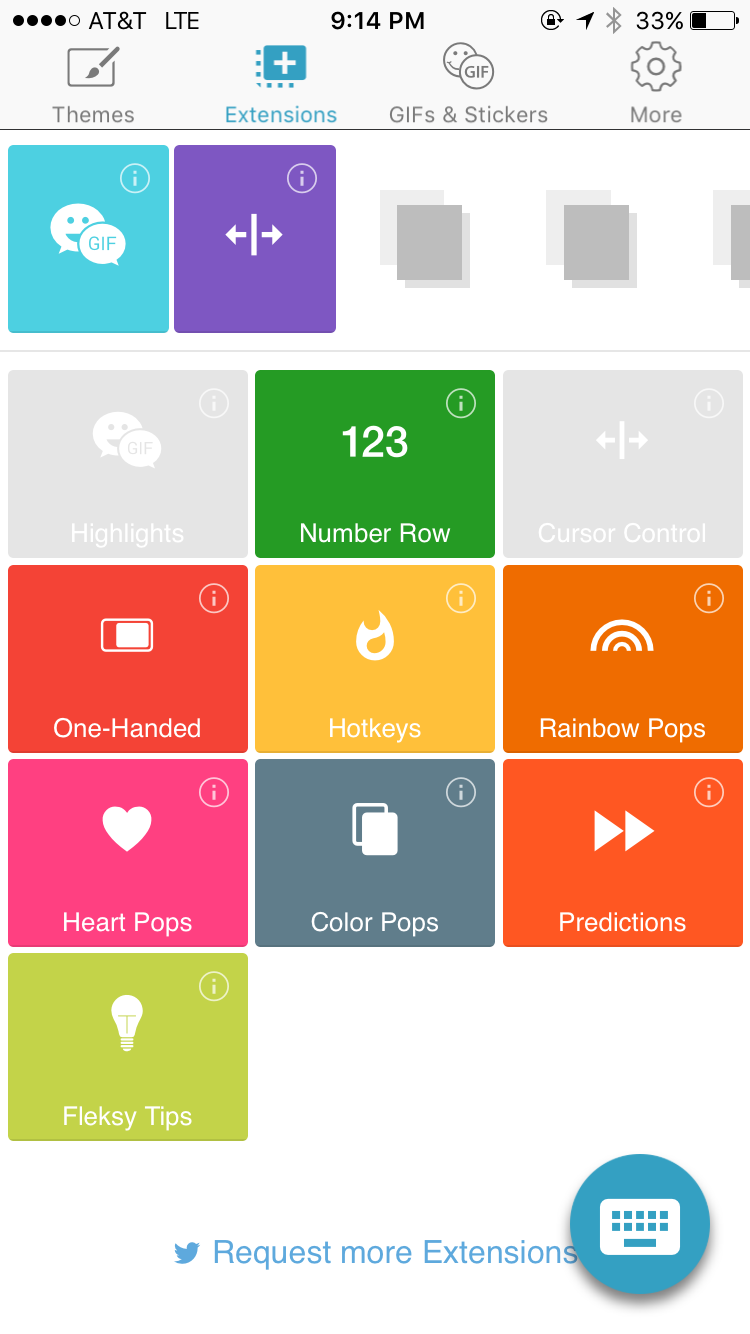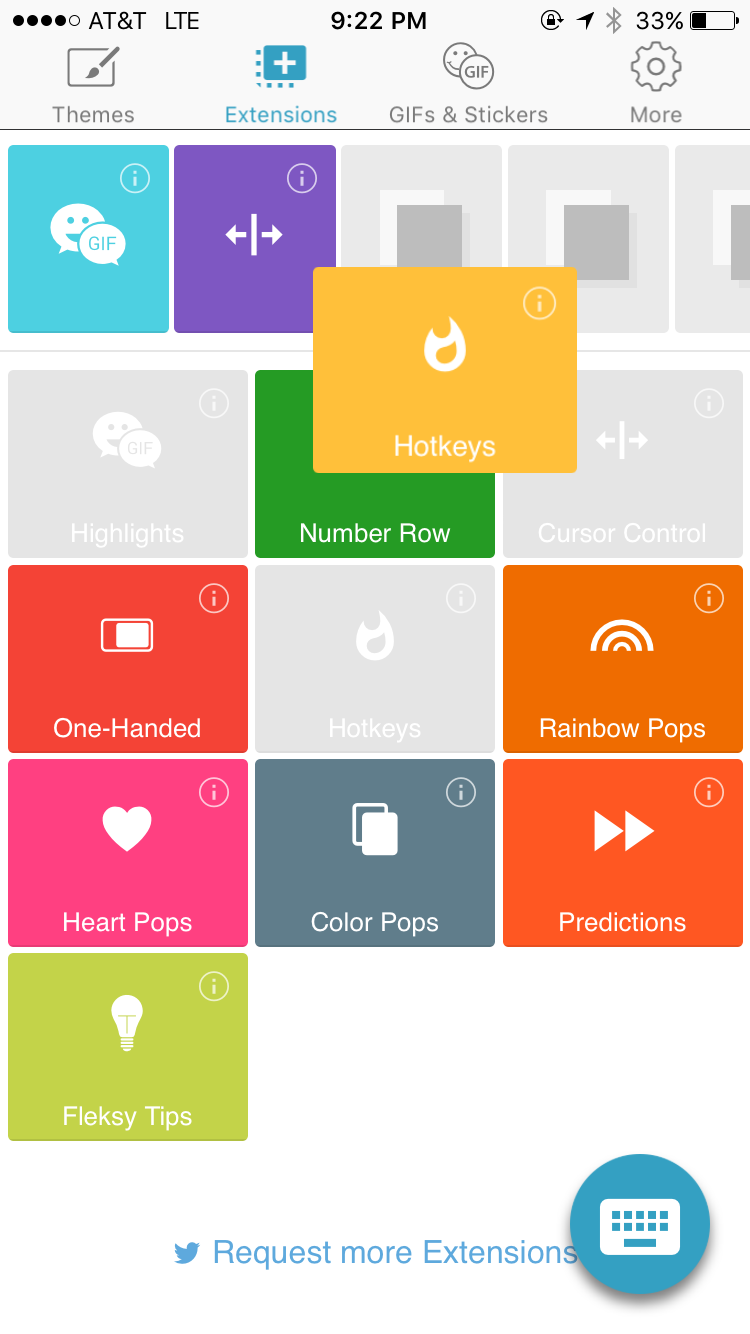Fleksy Extensions
When I joined Fleksy, it was the World's Fastest Keyboard; a positioning reinforced by our pursuit of Guinness World Records. Boasting some of the best correction technology in existence, we'd quickly grown to one of the hottest Android keyboard apps, going toe-to-toe with established players like Swiftkey and Swype. However, when iOS 8 opened up keyboard customization, the landscape shifted. We, like most keyboard apps prior to iOS 8, were a paid app, and the functionality we offered beyond purely "faster typing" was limited to colored themes. iOS 8 introduced a number of freemium apps attempting to grab market share on the new platform, and the ease of switching between keyboards on iOS allowed for point-solution keyboards which did things like GIF sharing (which hadn't been possible on Android until we launched it). Presented with new challenges and opportunities, we took a hard look at how we could improve our product roadmap. Ultimately, the Extensions launch allowed us to successfully sustain growth, transition to a freemium model, and get selected as a Google Play Editor's Choice and Best App of 2015.
Goals
- Develop a viable new monetization strategy which would improve LTV and enable a transition to a freemium model
- Create a more defensible, differentiated position in the face of increasing market pressure on "speed" positioning from copycats
Insights
We conducted a lot of research, both for this project specifically, and in general. We mined usage data, reviews, tweets, support tickets, and conducted user segmentation surveys. We also closely analyzed competitors, particularly the new explosion of competitors on iOS. From this, we gleaned a few insights.
- For our purposes, we'll focus on one user segment we identified. Customizers skewed younger and predominantly loved the personalization and self-expression Fleksy enabled (classic Millenials).
- Customizers engaged, retained, and monetized at a much higher level than our other segments, and were growing fastest.
- Some of the most popular keyboards on iOS were point-solution keyboards which added "fun" functionality, and didn't have anything to do with typing.
Ok, so what are Extensions?
Extensions are customizable functions which are added to a bar at the top of your Fleksy keyboard, which allow you to easily do things beyond basic text input. They can be switched between with a swipe, so you don't need to compromise between having fun with GIFs or typing faster on Fleksy's keyboard. They do things like search GIFs, turn your keyboard into a launcher, and add edit functionality.
We loved Extensions' potential for a few reasons... First, they gave us a clear differentiator as the only keyboard which allowed you complete customization of your keyboard, without sacrificing typing speed - which also clearly satisfied our most important segment's core desire. Second, many of them were things we already had on our roadmap, so packaging them this way gave us a clear path to monetizing future features, as well as fitting them cleanly into our product story. And lastly, we felt they opened up huge potential for branded partnerships (like our Yahoo search Extension and Riffsy GIF Extension), and enabled us to eventually create a platform story.
We put a lot of thought and user/competitive research into deciding how to price them. Eventually, we settled on a "slots" model, where you could have as many "active" Extensions as you had open Extension Slots. The first 3 were free, and unlocking more slots was $.99 per slot, or $1.99 for 3 slots. In the future, we planned to require multiple slots for higher-value Premium Extensions. This structure satisfied a lot of needs - it allowed us to stay competitive with point-solution competitors generally priced under $1.99, it allowed us to message trying Extensions as free, and it left the door open to ramp up monetization on them in the future with Premium Extensions.
Packaging
Launching Extensions required a complete redesign of our app. We wanted to create an experience which was intuitive, surfaced monetization opportunities (like our $1.99 3-slot bundle), and was flexible enough for us to easily feature and communicate new future extensions.
After some initial concept testing and discussion with some of our best users, to gauge interest and reaction to our pricing and product roadmap, we conducted a lot of user tests watching people engage with Extensions, before sending it to a small beta group, and eventually launching. Throughout this process, we rapidly iterated on both our in-product Extensions store design and on-boarding, as well as our email, and push on-boarding communications, to ensure we were educating people properly.
Launch promotion
Launch promotion was pretty straightforward for Extensions. Using our owned channels, we updated our website with a page dedicated to Extensions, updated our app store pages, sent segmented emails and push notifications to users, communicated regularly via social media and engaged with those discussing us, and posted a blog post. Via earned channels, in addition to our official press release, we did a ton of grassroots blogger outreach (very successfully, I might add), as well as securing an exclusive feature article with VentureBeat. We also worked closely with some of our key partners to secure featuring on both the Apple App Store and Google Play, and various co-marketing opportunities with Riffsy and Yahoo.





